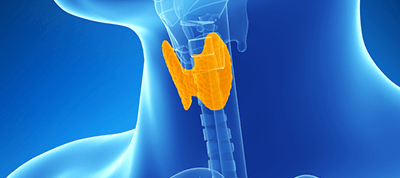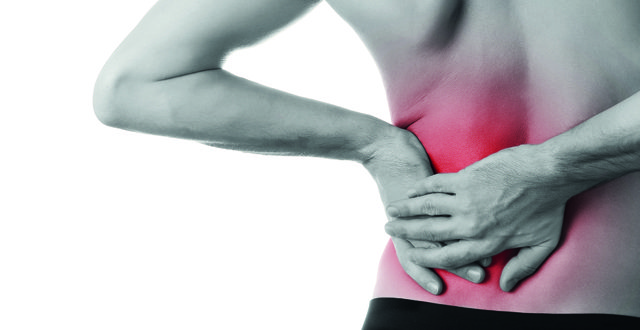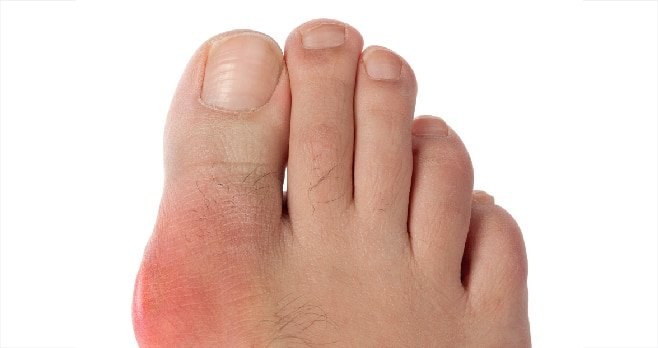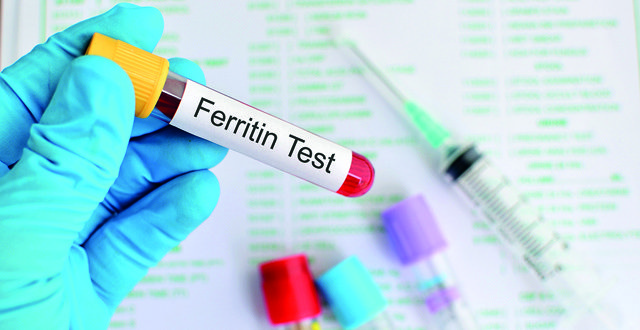Migraine is the most common headache disorder seen by doctors. The World Health Organisation (WHO) Global Burden of Disease (GBD) Studies have recently ranked migraine as the second highest cause worldwide of years lost due to disability (YLD). Migraine is the leading cause of YLD in the age group 15-49. Migraine patients may experience episodic or chronic symptoms, and the latter is usually associated with the most significant disability.
<img src=”../attachments/03eba7b0-fedc-4137-8bf2-f372ab1c2f85.JPG” alt=”” />
<strong>Dr Mary Kearney</strong>
At a recent migraine education seminar in Dublin, hosted by the Migraine Association of Ireland, Dr Allan Purdy, a Neurologist from Nova Scotia with extensive expertise in migraine, made interesting comparisons between migraine and epilepsy. He compared the headaches in migraine to epileptic seizures. Migraine is a brain disorder just like epilepsy; it is not a vascular disorder.
<h3 class=”subheadMIstyles”>Women</h3>
Migraine is three times more common in women than in men in the 15-49 years age group. These sex differences are generally attributed to the differential effects of male and female sex hormones on migraine pathophysiology. The Migraine Association of Ireland (www.migraine.ie) have found that they have an abundance of queries on their free phone line (1800 902 4920) from women in this age group about their symptoms. As their assessment and treatment options are slightly different than other migraine patients, I thought it was timely to discuss the most up to date information about how migraine affects women at a time in their life when they are most productive in their work and personal life. The migraine pattern may evolve over a woman’s reproductive lifetime.
As shown in <strong>Figure 1</strong>, oestrogen levels rise mid-cycle at ovulation, usually at day 14 and then reduce slightly, but remain relatively static until the day before menstruation. It is not an absolute fall, but a relative decrease in oestrogen. Menstrual migraine attacks are mostly without aura. In some cases, female patients may also develop migraine at ovulation on a regular basis. In this scenario, a woman may be sensitive to the small drop in oestrogen that occurs, about 12 days before menstruation starts.
<em>Pure menstrual migraine</em> (PMM) is present in 7-to-14 per cent of migraineurs and its occurrence is wholly confined to a strict period around menstruation, and very rarely at other times. It is important that diary-documented evidence, over a minimum of three cycles, is present to confirm the diagnosis of PMM. It must fulfil the following <em>International Headache Society</em> (IHS) <em>International Classification of Headache Disorders (ICHD-3)</em> criteria for diagnosis: A1.1.1 Pure menstrual migraine without aura: Occurring exclusively on day 1+2 (ie, -2 to +3) of menstruation in at least two-out-of-three menstrual cycles and at no other time of the cycle
<em>Note:</em> The first day of menstruation is day one, the preceding day is -1; there is no day 0. Menstruation is considered to be endometrial bleeding resulting from either:
<p class=”listBULLETLISTTEXTMIstyles”>Normal menstrual cycle;
<p class=”listBULLETLISTTEXTMIstyles”>Withdrawal of exogenous progesterone when using the combined oral contraceptive pill;
<p class=”listBULLETLISTTEXTMIstyles”>Withdrawal of cyclical hormone replacement therapy.<br /> <br />
<em>Menstrual related migraine</em> (MRM) occurs in two-thirds of female patients. This is where attacks occur during menstruation two-thirds of the time and at other times.
The predictability of MRM makes these headaches more amenable to planned treatment. The importance of distinguishing between PMM and MRM is that hormone prophylaxis is more likely to be effective for the former.
<h3 class=”subheadMIstyles”>Mini-prophylaxis for menstrual migraine</h3>
In many women, migraine around the time of menstruation is more difficult to treat. The attacks are usually of longer duration and are more severe than migraine at other times in the cycle. In general, treatment is the same for menstrual migraine as non-menstrual migraine. If migraine is infrequent, non-steroidal anti-inflammatory drugs (NSAIDs) alone (or with paracetamol) or in combination with a triptan, may be particularly helpful. NSAIDs are also beneficial for treating menstrual cramps. If migraine is frequent, predictable, prolonged or poorly responsive to therapy, consideration should be given to what is known as mini-prophylactic treatment. In this situation, the long-acting triptans, frovatriptan or naratriptan 2.5mg twice a day, are recommended for continuous use over three-to-five days. This should not significantly contribute to medication overuse as long as these agents are limited to no more than six-to-eight days per month.
Medication overuse is defined by the amount of acute medication taken per month by a patient. Each medication has a specific threshold. The use of simple analgesia, including paracetamol and NSAIDs on 15 or more days per month constitutes medication overuse. Triptans, combination analgesia (ie, solpadeine, neurofen plus) and opioids (ie, tramadol, oxycodone) have a moderate risk of causing medication overuse when used for 10 days or more per month.
The triptan may be started in combination with a NSAID two days before the expected date of menstruation (in patients with regular cycles) or during the prodrome.
Another approach is to increase the dose of their regular preventative medication, such as topiramate or amitriptyline five days before menstruation (level 4, grade C). Adding magnesium 500mg starting at ovulation and continuing until after menstruation may prevent or decrease the severity of migraine attacks (level 4, grade C).
<em>MRM with aura</em>, in the age group 15-49 years, usually has a different hormonal response than those who get PMM or MRM without aura. MRM with aura is most often seen in high oestrogen states such as combined hormonal contraception or hormonal replacement therapy (HRT).
<h3 class=”subheadMIstyles”>Other prophylactic options for menstrual migraine</h3>
For those with PMM and MRM, a possible approach is to suppress ovulation using the following:
<p class=”listBULLETLISTTEXTMIstyles”>Progesterone only pill (POP) desogestrel, which suppresses ovulation. Other POPs act primarily through their effects on cervical mucosa and are unlikely to suppress ovulation. The POP is safe in those with migraine with aura.
<p class=”listBULLETLISTTEXTMIstyles”>Progesterone injection, ie, Depo-Provera, which is given 12-weekly.
<p class=”listBULLETLISTTEXTMIstyles”>Progesterone implant, ie, Implanon, which is a long acting reversible contraception (LARC) and lasts three years.
<p class=”listBULLETLISTTEXTMIstyles”>The Mirena coil also contains progesterone. It acts at a local level on cervical mucosa and results in thinning of the uterus. It usually does not suppress ovulation, so it may not prevent PMM or MRM for some women.
<p class=”listBULLETLISTTEXTMIstyles”>A further approach is to supplement oestrogen during the days when oestrogen levels drop significantly with an oestrogen-containing gel.
<p class=”listBULLETLISTTEXTMIstyles”>It is possible to partly or completely suppress the menstrual cycle by using the combined oral contraceptive pill (COCP) without a break for 63-84 days (three or four 21 day packs without a break). It is acceptable to continue this 63-84 day cycle for a number of years. Women need to be mindful of weight gain when taking hormonal contraception as it in itself can contribute to headaches.
<h3 class=”subheadMIstyles”>Oral contraceptive options</h3>
There are three different types of oral contraceptives: Fixed dose, triphasic and POP. The use of triphasic oral contraception may increase migraine due to repeated hormone changes and should be avoided where possible. If using COCP, use a low-dose oestrogen product. There are generally fewer side effects and the incidence of migraine is lower than with higher-dose pills. Many women may have their first migraine when using the COCP. In one-third of women, their COCP will have no effect on their migraine, one-third will get worse, and one-third will get better. In female migraineurs with aura who also smoke, the COCP is absolutely contraindicated, as there is a considerable risk of stroke.
One should stop the COCP in migraineurs when:
<p class=”listBULLETLISTTEXTMIstyles”>Migraine frequency and/or severity increases;
<p class=”listBULLETLISTTEXTMIstyles”>New-onset aura occurs;
<p class=”listBULLETLISTTEXTMIstyles”>In unusual or prolonged migraine.
POP is often the contraceptive of choice in migraine. As mentioned above, desogestrel is particularly helpful in PMM. However, there may be side effects including bleeding and weight gain. The bleeding can be helped by increasing the dose of progesterone to two tablets daily. This in turn may further help the migraine.
<h3 class=”subheadMIstyles”>Migraine and pregnancy</h3>
Approximately 41 per cent of all Irish pregnancies are unplanned, so inadvertent foetal exposure to medication is likely in those who have migraine. It is therefore important to counsel all women of childbearing age about this possibility when prescribing medication. Topiramate and valproate are particularly of concern as there are significant risks to the unborn child. It is important to discontinue almost all medication prior to conception in women who are considering starting a family. For most women, their migraine improves in pregnancy, especially in the second and third trimester. However, 4-to-8 per cent of women experience a worsening of migraine during pregnancy and approximately 5-to-10 per cent of migraine begins in pregnancy. Pre-pregnancy headaches almost invariably return following childbirth.
Management of migraine in pregnancy should focus on maximising lifestyle measures initially. Low-dose propranolol or amitriptyline may be used for prophylaxis in pregnancy if the migraine is particularly troublesome. The use of triptans or NSAIDs in pregnancy is not recommended. They have been shown to cause decreased foetal body weight, increased miscarriage and an increase in foetal abnormalities in animals. They should be avoided if at all possible, but can very occasionally be used after discussing the need for treatment and the associated risks. Oral steroids are not recommended. Women may benefit from greater occipital nerve (GON) blocks or use of the cephaly stimulator. When these therapies are not available, it is recommended that they should be offered paracetamol for the acute treatment of migraine. They should take the lowest dose possible for the shortest time. If persistent vomiting is present with the migraine attacks, intravenous fluids with metoclopramide or ondansetron may help.
Post-partum, approximately half of women with migraine have a recurrence within one month of giving birth. This may be delayed by breastfeeding. Most of the medications that are routinely used in migraine are excreted in breast milk. In general, medications deemed safe to be used in pregnancy are safe for breastfeeding, with the exception of diphenhydramine (present in Benylin). The prescribing information for sumatriptan says to ‘pump and dump’ the breast milk.
<h3 class=”subheadMIstyles”>Menopause</h3>
Menopause is defined at the absence of menstruation for one year. The average age for menopause is 53 years old. Peri-menopause is described as the decade preceding menopause. An increase in migraine during this period (see <strong>Figure 2</strong>) is most likely due to fluctuating hormones and more frequent menstruation.
Maintenance of a stable hormonal milieu is typically associated with fewer migraine attacks. This could be achieved during the peri-menopausal period by suppressing ovarian activity using oestrogen supplements, estradiol implants, continuous combined hormonal contraceptive or the progesterone-only contraceptive, desogestrel. Trans-dermal estradiol administration (using the lowest effective dose that controls vasomotor symptoms) may be particularly helpful as absorption is less variable.
Following natural menopause, migraine improves in 60-to-70 per cent of women. After surgical menopause, migraine symptoms worsen in 40-to-70 per cent. No recent study has been undertaken in this area. The increase in symptoms before menopause and the decline after spontaneous menopause tends to occur only in women with a history of menstrual associated migraine.
HRT is not contra-indicated in those with migraine with aura as HRT contains natural oestrogen. If using HRT, the dose of oestrogen is as important as the route of delivery. Too high a dose, coupled with surges in natural oestrogen, can trigger migraine with aura as well as causing symptoms of oestrogen excess including nausea, fluid retention, breast tenderness and leg cramps. As in the peri-menopausal period, transdermal low-dose oestrogen is recommended. Some post-menopausal women continue to produce significant amounts of oestrone and oestradiol in extra-ovarian tissue, including the brain. Women with migraine and vasomotor symptoms in whom oestrogens are contraindicated may benefit from escitalopram or venlafaxine.
<h3 class=”subheadMIstyles”>Future</h3>
Prof Lars Edvinsson, Lund University, Sweden and President of the International Headache Society spoke at the recent migraine seminar in Dublin (see page 35 for meeting report). He detailed the discovery of the Calcitonin Gene Related Peptide (CGRP), a migraine specific pathway and now treatment basis that he discovered in 1983. CGRP is a naturally occurring substance and blockers aim to stop the migraine attack before it even starts. CGRP therapies are currently available to some extent in the US and hopefully will be available in Europe in the coming months. They offer great hope to those with resistant migraine. However, access and cost to these new treatments in Ireland is going to be a significant factor going forward. Nevertheless, the future for those with migraine is brighter now than ever before.
<p class=”referencesonrequestMIstyles”><strong>References on request</strong>
<em>Dr Kearney would like to acknowledge the help of Ms Esther Thompkins, Clinical Nurse Specialist in Headache and Dr Martin Ruttledge, Consultant Neurologist with Special Interest in Headache, in preparing this article.</em>









Leave a Reply
You must be logged in to post a comment.